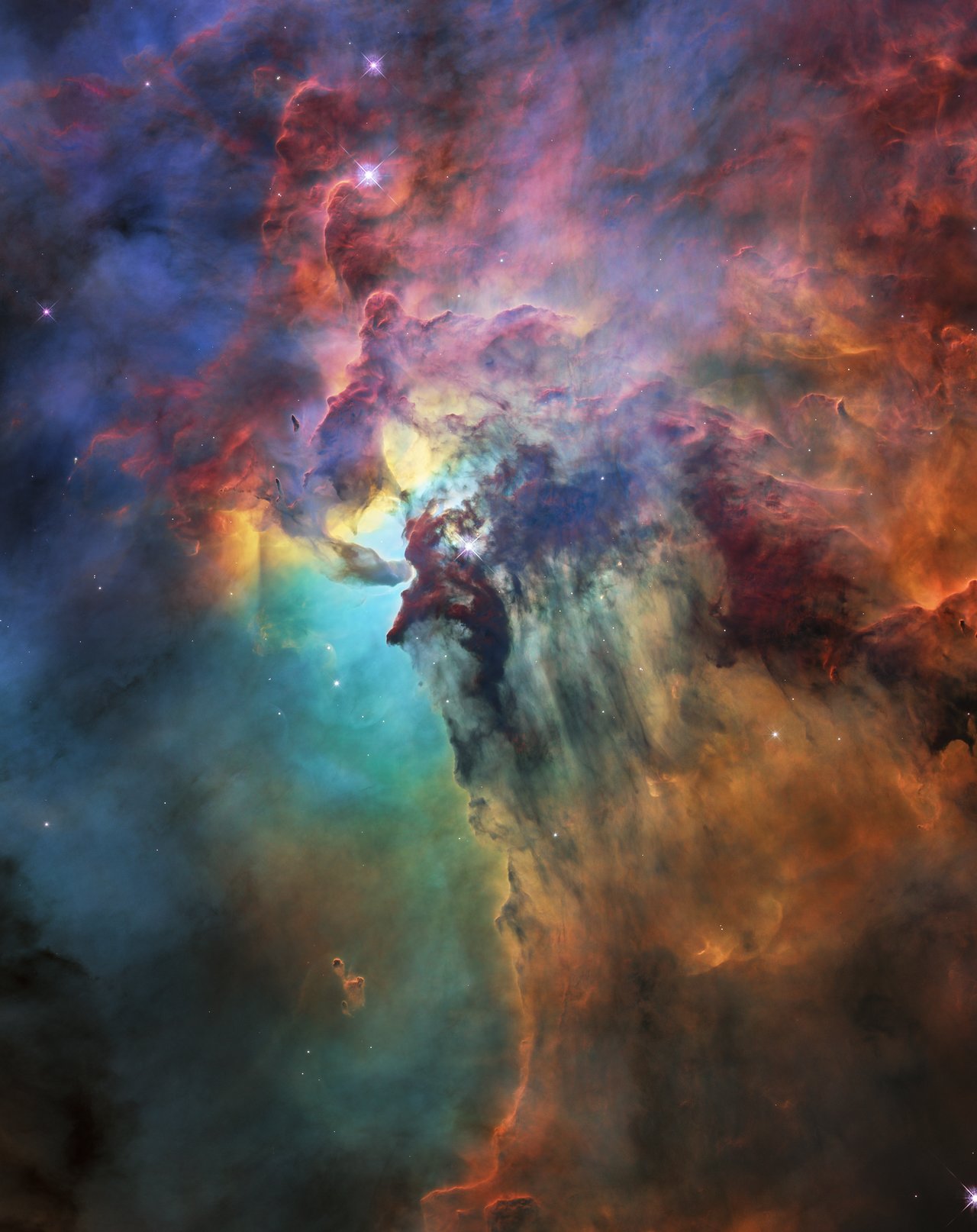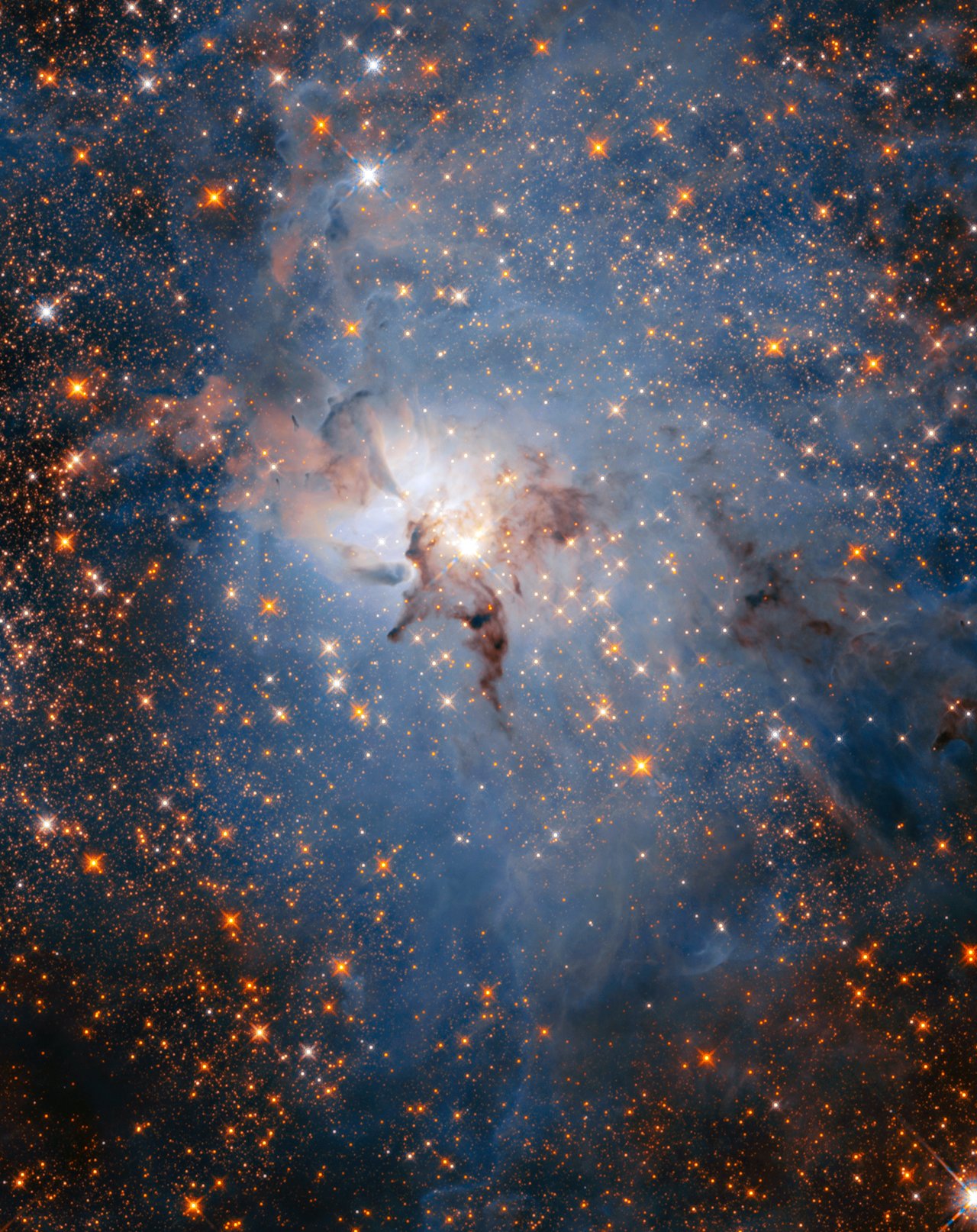Lagoon Nebula Dazzles in Hubble Telescope's 28th-Birthday Photos
The iconic Hubble Space Telescope is about to turn 28 years old, and a batch of gorgeous new imagery helps mark the occasion.
Hubble launched aboard the space shuttle Discovery on April 24, 1990, and was deployed into Earth orbit a day later. NASA and the European Space Agency (ESA), which jointly run the Hubble mission, release great photos every April to celebrate these milestones.
This year, the star of the anniversary show is the Lagoon Nebula, a colossal hub of star birth that's 55 light-years wide and 20 light-years tall. [Celestial Photos: Hubble Space Telescope's Latest Cosmic Views]
"Even though it is about 4,000 light-years away from Earth, it is three times larger in the sky than the full moon," NASA and ESA officials wrote today (April 19) in a description of the newly released Hubble images, which show the nebula in both visible and infrared light.
"It is even visible to the naked eye in clear, dark skies," the officials added. "Since it is relatively huge on the night sky, Hubble is only able to capture a small fraction of the total nebula."

Indeed, the visible-light image — which Hubble took with its Wide Field Camera 3 instrument this past February — shows a central patch of the nebula just 4 light-years across. The picture doesn't capture the lagoon-like pool of dust that darkens a swath of the nebula and gives the object its name, NASA and ESA officials wrote.

Over its 28 years in space, Hubble has become an institution, thrilling the public with spectacular views of the cosmos and making observations that have transformed astronomers' understanding of the universe and its history.
Get the Space.com Newsletter
Breaking space news, the latest updates on rocket launches, skywatching events and more!
For example, Hubble observations of exploding stars known as supernovas helped reveal in 1998 that the universe's expansion rate is accelerating, apparently thanks to an unseen and mysterious force known as "dark energy." This stunning discovery earned three researchers the 2011 Nobel Prize in physics.
But it hasn't always been smooth sailing for Hubble. The telescope famously launched with a defect in its primary mirror, leading to slightly blurry images. Spacewalking astronauts fixed the problem in December 1993. Astronauts further repaired, maintained and upgraded Hubble during four additional servicing missions, the last of which occurred in 2009.
The telescope is still going strong and is in good health. Mission team members have expressed confidence that Hubble will continue operating through 2020, and perhaps for considerably longer than that. Hubble's highly anticipated successor, the $8.8 billion James Webb Space Telescope, is scheduled to launch no earlier than May 2020.
Follow Mike Wall on Twitter @michaeldwall and Google+. Follow us @Spacedotcom, Facebook or Google+. Originally published on Space.com.
Join our Space Forums to keep talking space on the latest missions, night sky and more! And if you have a news tip, correction or comment, let us know at: community@space.com.

Michael Wall is a Senior Space Writer with Space.com and joined the team in 2010. He primarily covers exoplanets, spaceflight and military space, but has been known to dabble in the space art beat. His book about the search for alien life, "Out There," was published on Nov. 13, 2018. Before becoming a science writer, Michael worked as a herpetologist and wildlife biologist. He has a Ph.D. in evolutionary biology from the University of Sydney, Australia, a bachelor's degree from the University of Arizona, and a graduate certificate in science writing from the University of California, Santa Cruz. To find out what his latest project is, you can follow Michael on Twitter.









